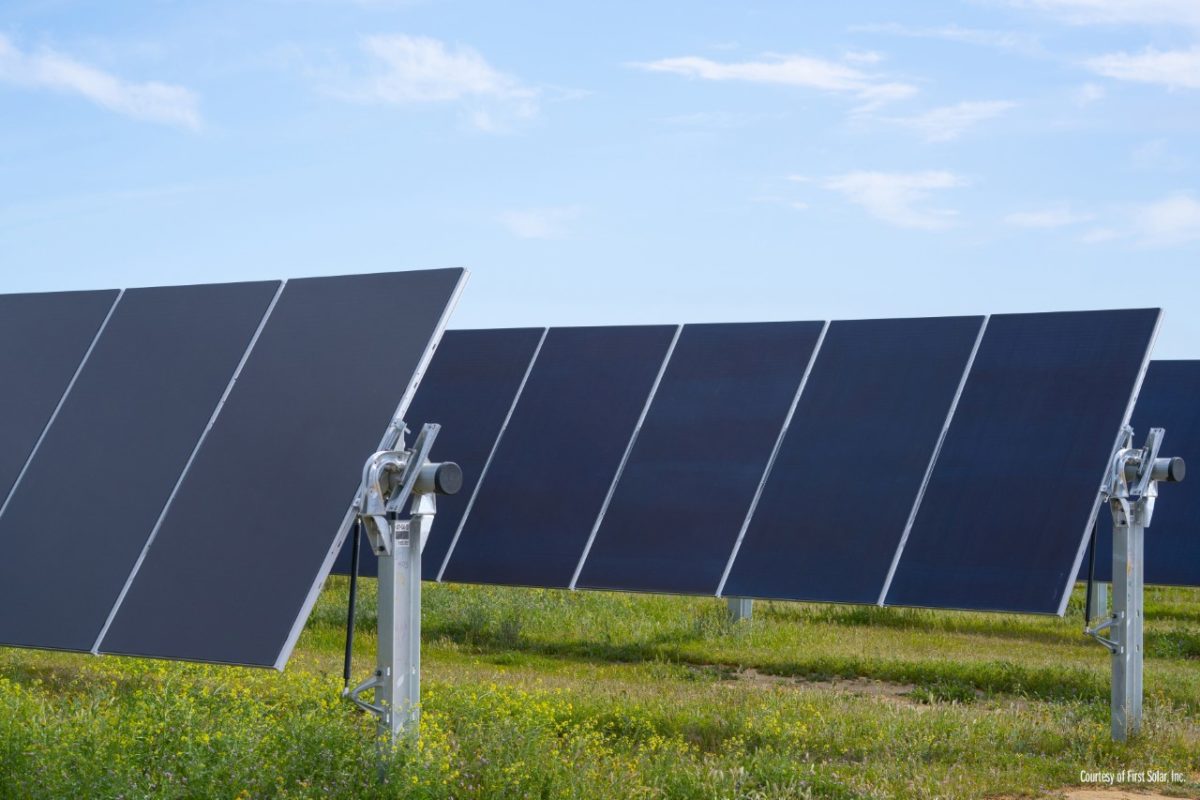First Solar said it plans to invest $684 million in a new, fully vertically integrated photovoltaic thin film solar module manufacturing facility in India. Contingent upon permitting, and pending approval of Indian government incentives that are satisfactory to the Arizona-based First Solar, the facility is expected to be built in the state of Tamil Nadu and commence operations in the second half of 2023.
The planned facility is projected to have a nameplate capacity of 3.3 GWdc. With First Solar’s expansion in the United States and India and optimization of its existing fleet, the company said that its nameplate manufacturing capacity will double to 16 GWdc in 2024.
Quarterly earnings
The company also reported its second quarter earnings. It said that net sales for the quarter totaled $629 million, down $174 million from the prior quarter. It said the decline primarily was due to the sale of the Sun Streams 2, 4, and 5 projects in the prior quarter. The decline was partially offset by an increase in module segment revenue and revenue related to a settlement agreement for a legacy systems project.
The company reported operating income of $110 million, compared to $252 million in the prior quarter. Second quarter operating income included depreciation and amortization of $66 million, revenue and gross margin related to the settlement agreement of $65 million, $9 million related to underutilization and production start-up, and share-based compensation of $5 million.
Net income per diluted share for the second quarter was $0.77, compared to $1.96 in the prior quarter, the company said.
U.S. expansion
In early June, First Solar said it would invest $680 million to expand its domestic U.S. photovoltaic solar manufacturing capacity by 3.3 GW annually, representing an implied capital expenditure of around $0.20 per watt.
The company said it intended to fund construction of its third U.S. manufacturing facility in Ohio with existing cash resources.

The new facility near Toledo is expected to start operations in the first half of 2023. It is projected to achieve its throughput entitlement (modules produced per day) by the end of 2023 with more than 3 GWdc of nameplate capacity. It is expected to reach full nameplate capacity, based on the company’s module efficiency roadmap, in 2025.
The facility will scale the company’s northwest Ohio footprint to a total annual capacity of 6 GWdc, which First Solar said represents one of the largest fully vertically integrated solar manufacturing complexes outside of China.
First Solar produces its thin film PV modules using a fully integrated, continuous process under one roof and uses a Cadmium Telluride (CadTel) semiconductor.
Well-defined goal
In a statement, Mark Widmar, CEO, said that India offers an attractive market for First Solar in part because the company’s module technology is advantaged in a hot, humid climate. He said the country has “a well-defined goal that will need over 25 GW of solar to be deployed every year for the next nine years.”
The International Energy Agency (IEA) has projected that India will overtake the European Union (EU) to become the world’s third-largest consumer of electricity by 2030, as the country’s population and Gross Domestic Product (GDP) continue to grow. As part of its climate targets, India has committed to ensuring that renewables will make up 40% of its energy portfolio by 2030. The country is forecast to account for almost 20% of the world’s installed solar capacity by 2040.
The facility will be designed using the manufacturing template established for First Solar’s recently-announced factory in Ohio. Combining highly skilled workers with Industry 4.0 architecture, machine-to-machine communication, artificial intelligence, and Internet of Things connectivity, it will feature high degrees of automation, precision, and continuous improvement.
The company said it continues to optimize the amount of semiconductor material used by enhancing its vapor deposition process. First Solar also operates a recycling program that recovers more than 90% of CadTel for use in new modules.
This article was updated on July 30 to include quarterly earnings details and a new photo of Mark Widmar.
This content is protected by copyright and may not be reused. If you want to cooperate with us and would like to reuse some of our content, please contact: editors@pv-magazine.com.









By submitting this form you agree to pv magazine using your data for the purposes of publishing your comment.
Your personal data will only be disclosed or otherwise transmitted to third parties for the purposes of spam filtering or if this is necessary for technical maintenance of the website. Any other transfer to third parties will not take place unless this is justified on the basis of applicable data protection regulations or if pv magazine is legally obliged to do so.
You may revoke this consent at any time with effect for the future, in which case your personal data will be deleted immediately. Otherwise, your data will be deleted if pv magazine has processed your request or the purpose of data storage is fulfilled.
Further information on data privacy can be found in our Data Protection Policy.